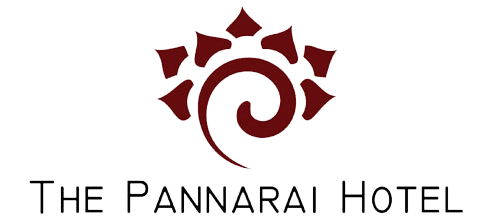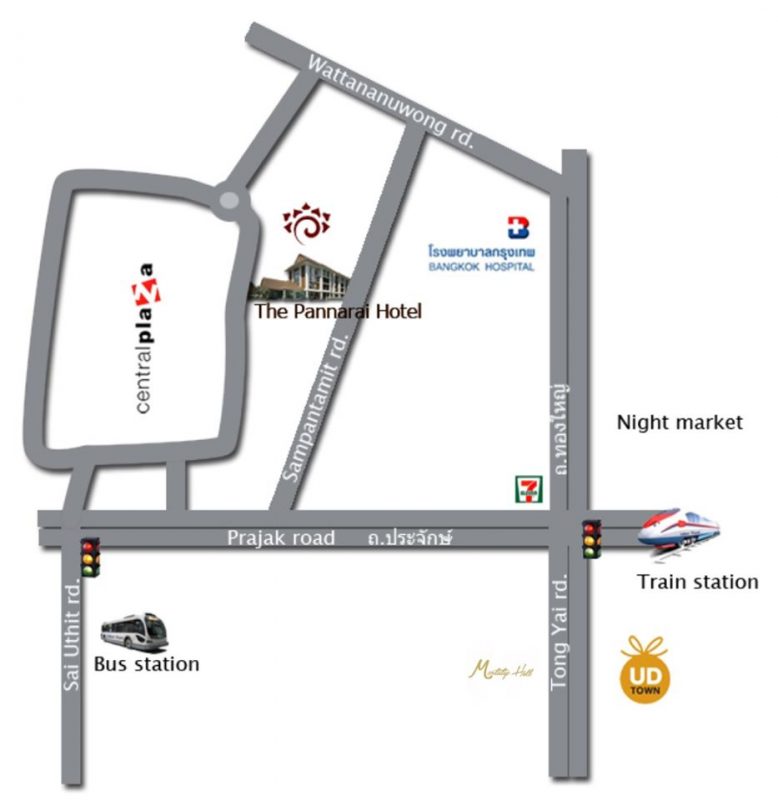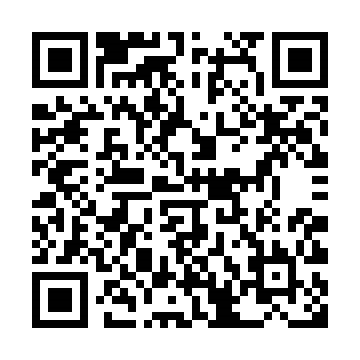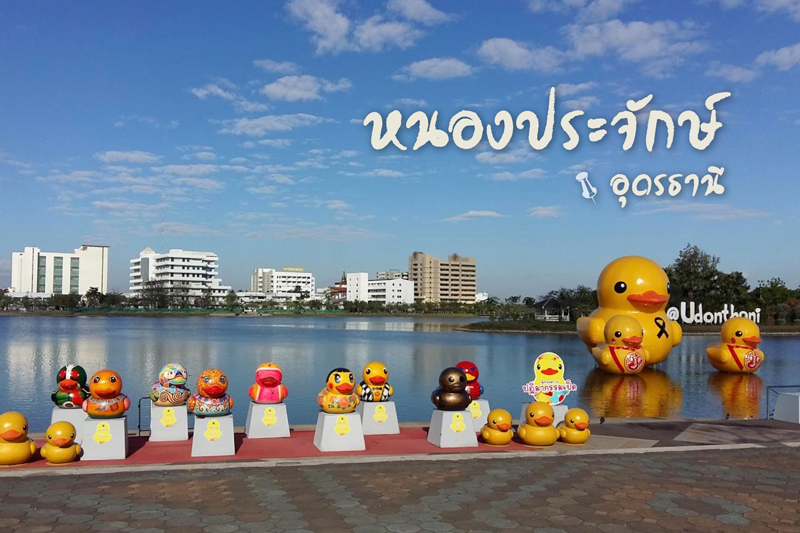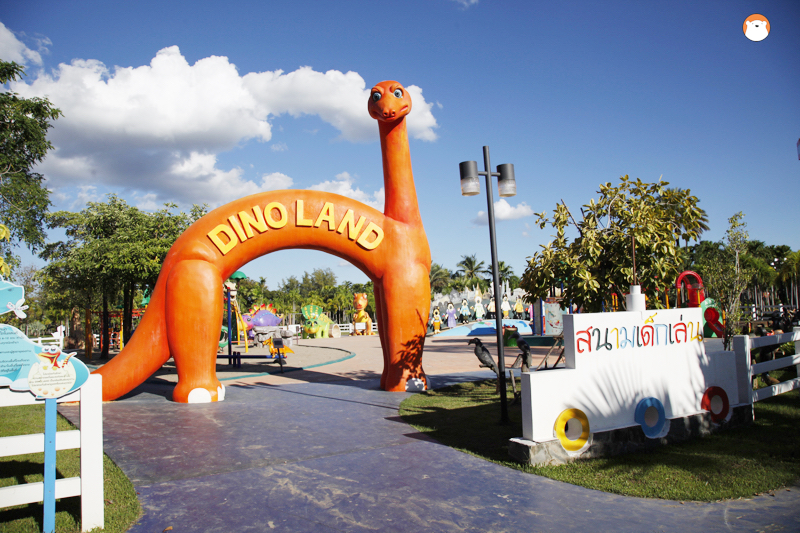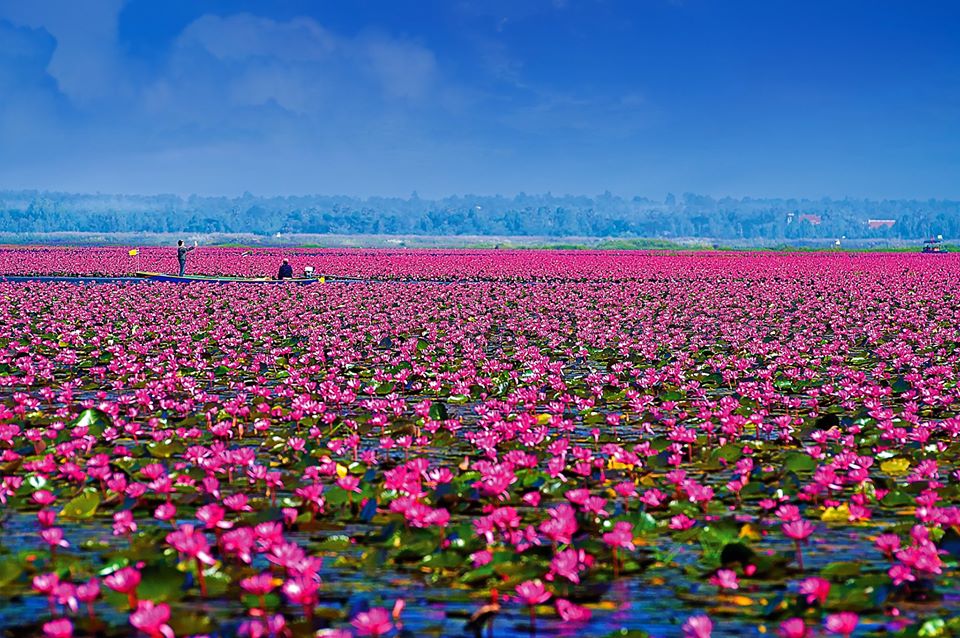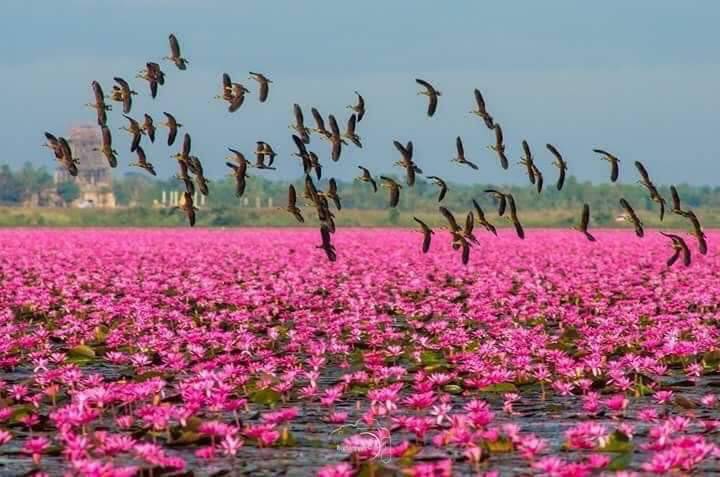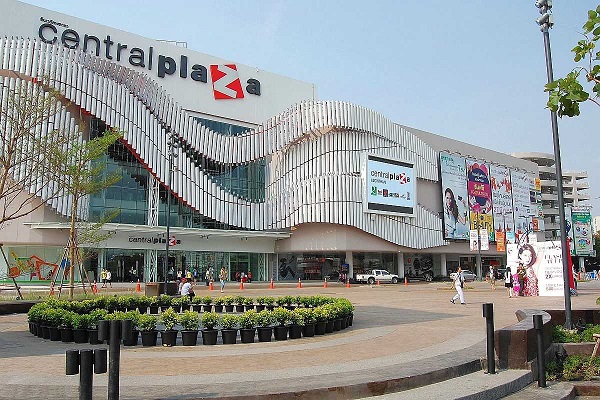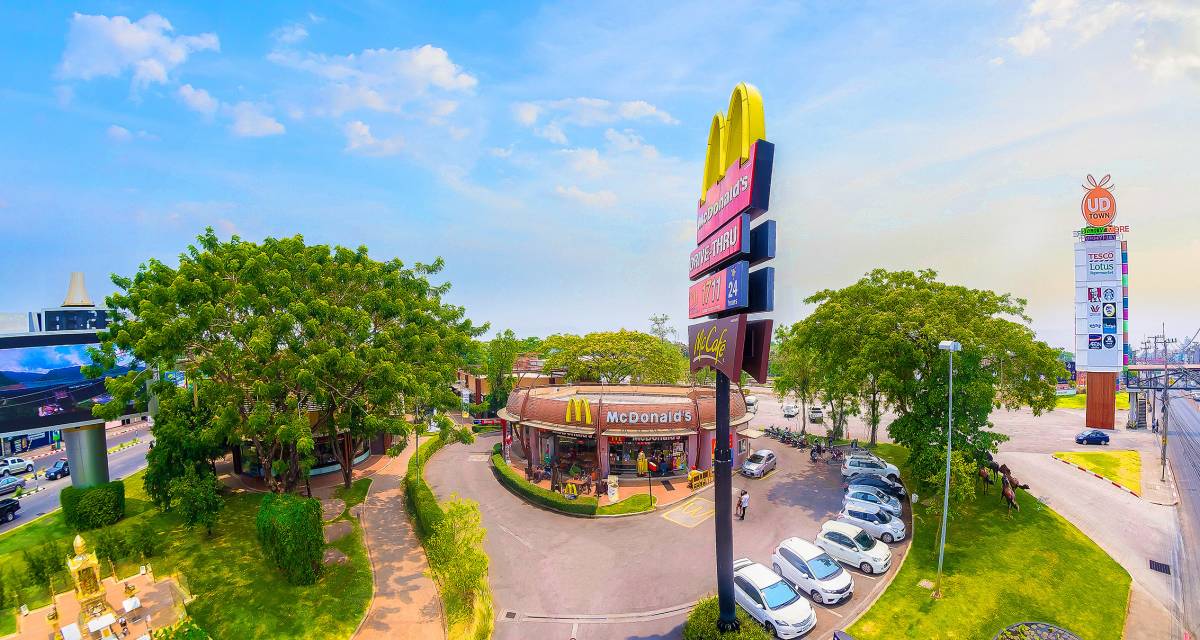Nong Prajak Park
Is found in the western part of town and is a delightful place to escape the busy downtown area. With its well maintained gardens and footpaths it is a popular place for the locals. The prime time is around sunset, when the park attracts joggers, cyclist, aerobic dancers and football players. There are outdoor restaurants near the park along Tesa Road, where you relax and enjoy the food and drinks.
Located in the Udon Thani Municipality is the pond, which has existed before the establishment of Udon Thani town. Lying to the west of the town, it was formerly called “Nong Na Klue” (pond of salty water) and later changed to “Nong Prachak” in honor of Major General HRH Prince Prachaksinlapakhom, the founder of Udon Thani town. In 1987, the Udon Thani Municipality improved the pond as a royal tribute to King Rama IX on the auspicious occasion of his 50th birthday anniversary. On an island in the pond, a small garden is filled with decorative and flowering plants, and there is a bridge linking the island with the mainland. Within the park, there is a fountain, a clock tower, and a playground. It serves as a place of recreation and exercise for the public.
